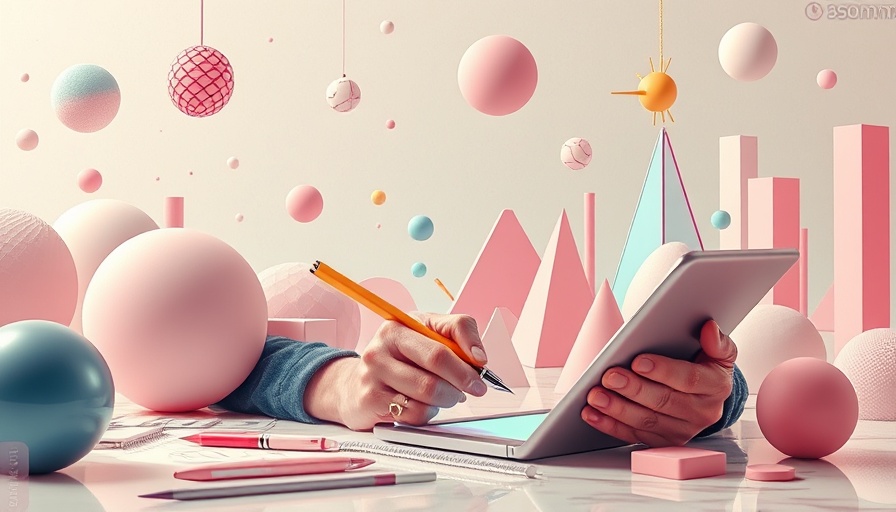
The Rise of AI in Graphic Design: Revolutionizing Creativity
In the rapidly evolving world of graphic design, AI tools are transforming not only how designs are created but also who can create them. From consultants to small business owners, the accessibility of AI-driven design tools has democratized the art of graphic creation, streamlining processes and increasing output quality.
Understanding the Benefits of AI for Graphic Design
With nearly 40% of marketers now utilizing AI image generators like DALL-E and Synthesia, the primary draw of these tools is their ability to expedite design workflows. Here are some distinct advantages:
- Speed: AI tools can produce graphics at the click of a button, saving countless hours of manual work.
- Flexibility: Users can easily generate tailored designs that cater to different customer segments or seasonal demands.
- Cost Efficiency: Streamlined design processes can lead to reduced costs, allowing small business owners to allocate resources more effectively.
Testing the Top AI Graphic Design Tools: What Works?
In a quest to identify the best AI graphic design tools, I tested eight different platforms. Each was evaluated on usability, output quality, and the value offered to the user. Here are some of my findings:
- Canva: Well-known for its user-friendly interface, Canva now integrates AI capabilities that assist in generating on-demand designs from prompts.
- DALL-E: Remarkably adept at creating bespoke illustrations, this generator proved to be both innovative and a bit whimsical.
- Synthesia: Focused on video content creation, this tool allows marketers to turn text into engaging visual storytelling.
Real-World Applications: Bringing AI Designs to Life
AI tools can significantly enhance productivity for entrepreneurs aiming to sharpen their branding strategies. For instance, quick edits like background removal can elevate a simple Instagram post into a professional-looking advertisement. As Robert Avila, an art director, mentions, incorporating AI in design projects speeds up the revision process, making it easier to adapt to client feedback.
Future Insights: What’s Next for AI in Graphic Design?
As AI technology continues to advance, we can anticipate a greater focus on personalization and interactivity in design. Future AI tools may evolve to offer users not just static images but dynamic content that adjusts based on user engagement and feedback.
Embracing AI for Enhanced Creativity and Efficiency
While skepticism around AI remains, especially concerning creativity, it is essential to recognize its potential as a supplement rather than a replacement for human designers. By empowering users to focus on more strategic aspects of design, AI can indeed enhance creativity, allowing individuals to spend more time conceptualizing and less time executing labor-intensive tasks.
Your Design Journey: A Call to Action
If you're a consultant, coach, or small business owner looking to elevate your brand, now is the time to explore AI graphic design tools. Not only can these technologies save you time and resources, but they can also help you produce professional-quality designs that resonate with your audience.
Consider integrating AI design tools into your workflow and watch as your creative process becomes faster, more efficient, and tailored to your unique vision.
 Add Row
Add Row  Add
Add 




Write A Comment